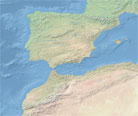Link Discovery for Maritime Monitoring
Link discovery in the maritime domain is the process of identifying relations - usually of spatial or spatio-temporal nature - between entities that originate from different data sources. Essentially, link discovery is a step towards data integration, which enables interlinking data from disparate sources. As a typical example, vessel trajectories need to be enriched with various types of information: weather conditions, events, contextual data. In turn, this provides enriched data descriptions to data analysis operations, which may lead to the identification of hidden or complex patterns, which would otherwise not be discovered, as they rely on data originating from disparate data sources.
This chapter presents the fundamental concepts of link discovery relevant to the maritime domain, focusing on spatial and spatio-temporal data. Due to the processing-intensive nature of the link discovery task over voluminous data, several techniques for efficient processing are presented together with examples on real-world data from the maritime domain.





